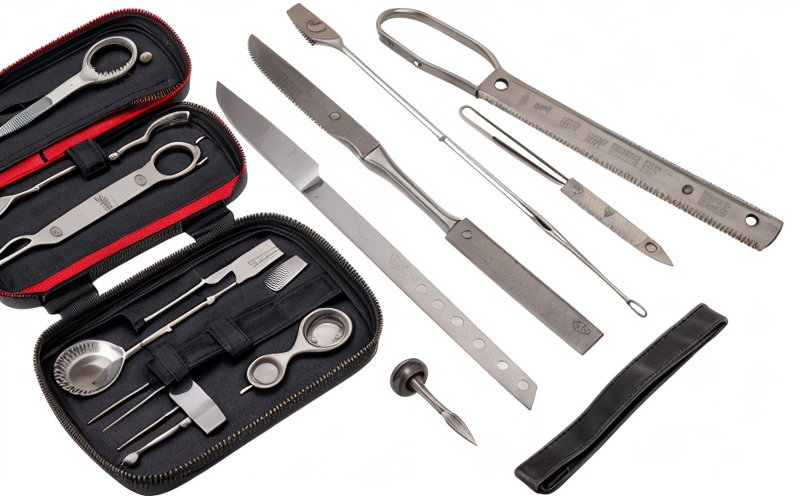Residual Protein Testing Post Cleaning of Instruments
The testing and evaluation of surgical instruments post-cleaning is a critical process in ensuring that medical devices meet stringent hygiene standards. In this context, residual protein testing plays an essential role in confirming that the cleaning process has been effective. This service ensures that any trace amounts of proteins left on surgical instruments do not compromise patient safety or lead to infections.
Proteins can be a significant concern in medical environments because they are a primary food source for bacteria and other microorganisms. If not removed completely during the cleaning process, these residues could lead to biofilm formation, increasing the risk of cross-contamination between patients. Therefore, it is crucial that surgical instruments undergo thorough cleaning followed by rigorous testing.
The standard procedure involves soaking the instrument in a protein-releasing solution for an extended period. After washing and drying, samples are taken from various parts of the instrument—blades, handles, joints, etc.—and analyzed using advanced spectrophotometric methods. These tests measure the amount of residual proteins present on the surface of the instrument.
The testing process is meticulously documented to ensure compliance with international standards such as ISO 17654:2008 and EN ISO 17654, which provide guidelines for the cleaning validation of medical devices. Compliance with these regulations ensures that healthcare providers can confidently use their instruments without fear of contamination risks.
Our team uses state-of-the-art equipment to conduct this testing accurately and efficiently. Our laboratory adheres strictly to best practices outlined by regulatory bodies like the FDA (Food & Drug Administration) and EU directives, ensuring reliable results every time.
In addition to providing accurate test results, we also offer comprehensive reports detailing each step of the cleaning process as well as the levels of residual proteins detected. This information is invaluable for quality managers and compliance officers who need detailed documentation supporting their efforts towards maintaining high standards within healthcare facilities.
We understand that every surgical instrument has unique characteristics; hence our approach varies slightly depending on factors such as material type, design complexity, and intended use. By tailoring our methods accordingly, we ensure consistent accuracy across all samples submitted for testing.
Applied Standards
| Standard | Description |
|---|---|
| ISO 17654:2008 | International standard for cleaning validation of medical devices, including requirements for residual protein testing. |
| EN ISO 17654 | European equivalent to ISO 17654, providing similar guidelines but tailored specifically for European markets. |
Customer Impact and Satisfaction
- Enhanced Patient Safety: By ensuring that all surgical instruments are free from residual proteins, we contribute to reducing the risk of postoperative infections.
- Reputation Building: Hospitals and clinics can build trust with their patients by demonstrating adherence to rigorous hygiene protocols.
- Cost Efficiency: Early detection of cleaning inefficiencies allows facilities to address issues promptly, avoiding costly recalls or reprocessing.
- Regulatory Compliance: Our services help healthcare providers stay current with changing regulations related to medical device sterilization and disinfection.
Competitive Advantage and Market Impact
- Reputation for Excellence: Providing reliable residual protein testing enhances our reputation among industry leaders, attracting more clients seeking top-tier services.
- Innovation Leadership: Our expertise in this area sets us apart from competitors, positioning us as a leader in medical device hygiene solutions.
- Patient Trust: By consistently delivering high-quality results, we help maintain the trust of both healthcare professionals and patients alike.





